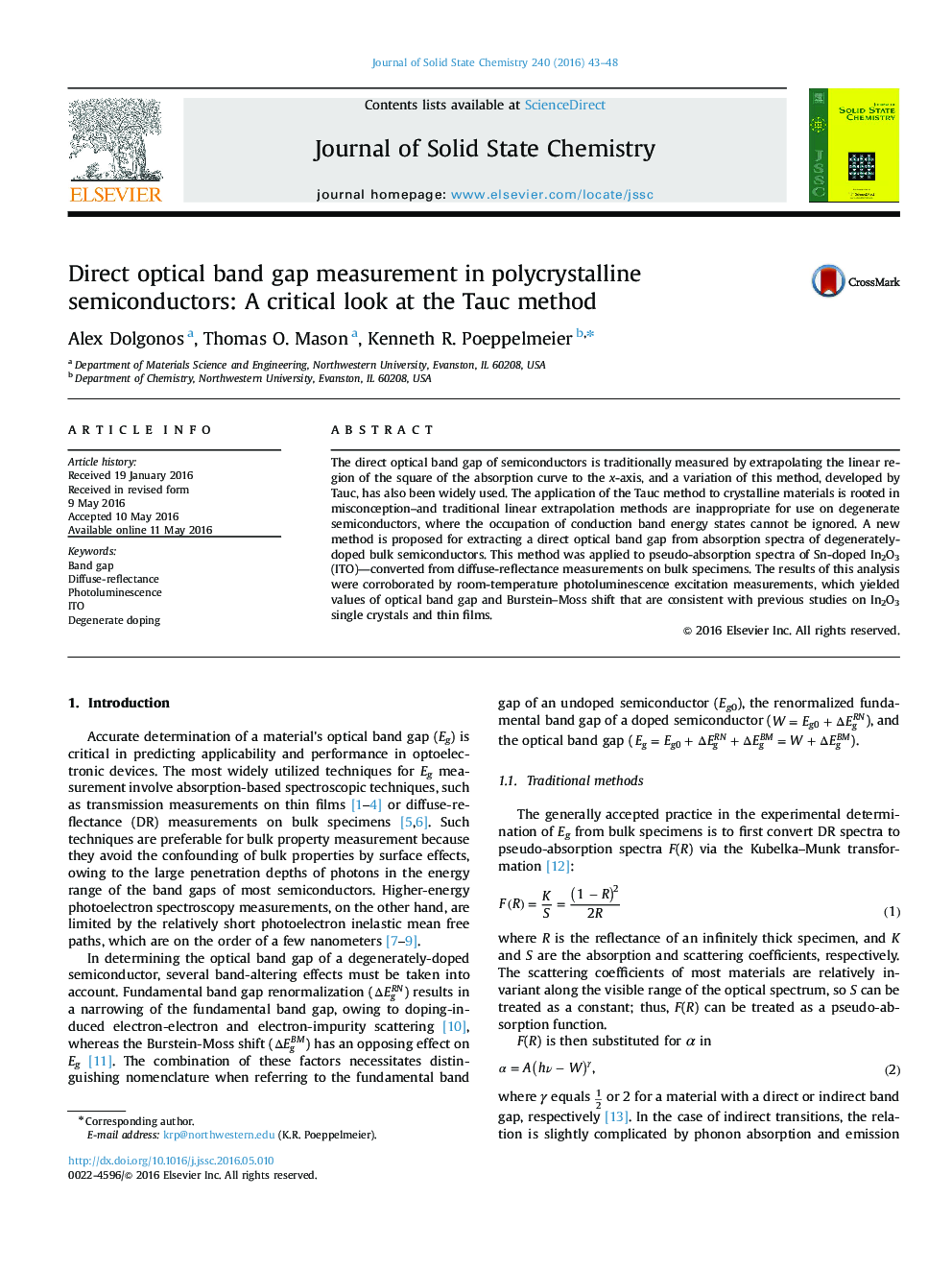| Article ID | Journal | Published Year | Pages | File Type |
|---|---|---|---|---|
| 1329549 | Journal of Solid State Chemistry | 2016 | 6 Pages |
•The Tauc method of band gap measurement is re-evaluated for crystalline materials.•Graphical method proposed for extracting optical band gaps from absorption spectra.•The proposed method incorporates an energy broadening term for energy transitions.•Values for ITO were self-consistent between two different measurement methods.
The direct optical band gap of semiconductors is traditionally measured by extrapolating the linear region of the square of the absorption curve to the x-axis, and a variation of this method, developed by Tauc, has also been widely used. The application of the Tauc method to crystalline materials is rooted in misconception–and traditional linear extrapolation methods are inappropriate for use on degenerate semiconductors, where the occupation of conduction band energy states cannot be ignored. A new method is proposed for extracting a direct optical band gap from absorption spectra of degenerately-doped bulk semiconductors. This method was applied to pseudo-absorption spectra of Sn-doped In2O3 (ITO)—converted from diffuse-reflectance measurements on bulk specimens. The results of this analysis were corroborated by room-temperature photoluminescence excitation measurements, which yielded values of optical band gap and Burstein–Moss shift that are consistent with previous studies on In2O3 single crystals and thin films.
Graphical abstractFigure optionsDownload full-size imageDownload as PowerPoint slide
